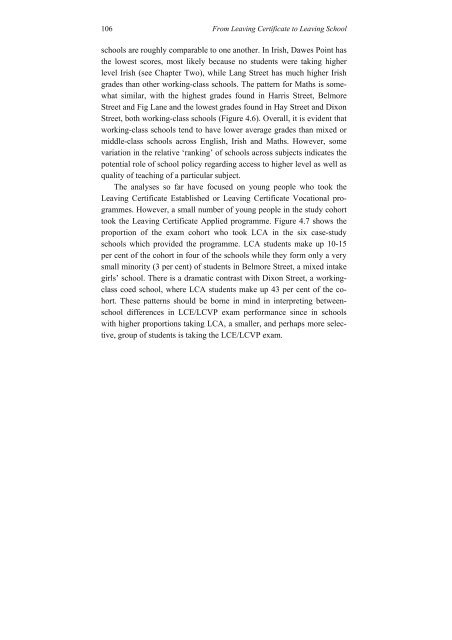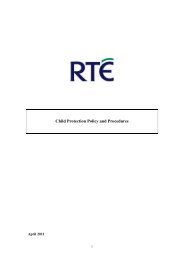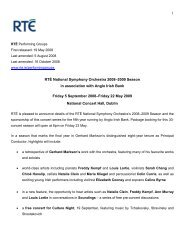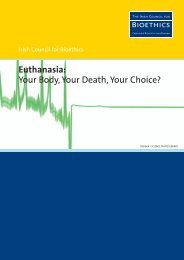From Leaving CertiFiCate to Leaving SChooL a Longitudinal Study ...
From Leaving CertiFiCate to Leaving SChooL a Longitudinal Study ...
From Leaving CertiFiCate to Leaving SChooL a Longitudinal Study ...
Create successful ePaper yourself
Turn your PDF publications into a flip-book with our unique Google optimized e-Paper software.
106<br />
<strong>From</strong> <strong>Leaving</strong> Certificate <strong>to</strong> <strong>Leaving</strong> School<br />
schools are roughly comparable <strong>to</strong> one another. In Irish, Dawes Point has<br />
the lowest scores, most likely because no students were taking higher<br />
level Irish (see Chapter Two), while Lang Street has much higher Irish<br />
grades than other working-class schools. The pattern for Maths is somewhat<br />
similar, with the highest grades found in Harris Street, Belmore<br />
Street and Fig Lane and the lowest grades found in Hay Street and Dixon<br />
Street, both working-class schools (Figure 4.6). Overall, it is evident that<br />
working-class schools tend <strong>to</strong> have lower average grades than mixed or<br />
middle-class schools across English, Irish and Maths. However, some<br />
variation in the relative ‘ranking’ of schools across subjects indicates the<br />
potential role of school policy regarding access <strong>to</strong> higher level as well as<br />
quality of teaching of a particular subject.<br />
The analyses so far have focused on young people who <strong>to</strong>ok the<br />
<strong>Leaving</strong> Certificate Established or <strong>Leaving</strong> Certificate Vocational programmes.<br />
However, a small number of young people in the study cohort<br />
<strong>to</strong>ok the <strong>Leaving</strong> Certificate Applied programme. Figure 4.7 shows the<br />
proportion of the exam cohort who <strong>to</strong>ok LCA in the six case-study<br />
schools which provided the programme. LCA students make up 10-15<br />
per cent of the cohort in four of the schools while they form only a very<br />
small minority (3 per cent) of students in Belmore Street, a mixed intake<br />
girls’ school. There is a dramatic contrast with Dixon Street, a workingclass<br />
coed school, where LCA students make up 43 per cent of the cohort.<br />
These patterns should be borne in mind in interpreting betweenschool<br />
differences in LCE/LCVP exam performance since in schools<br />
with higher proportions taking LCA, a smaller, and perhaps more selective,<br />
group of students is taking the LCE/LCVP exam.

















